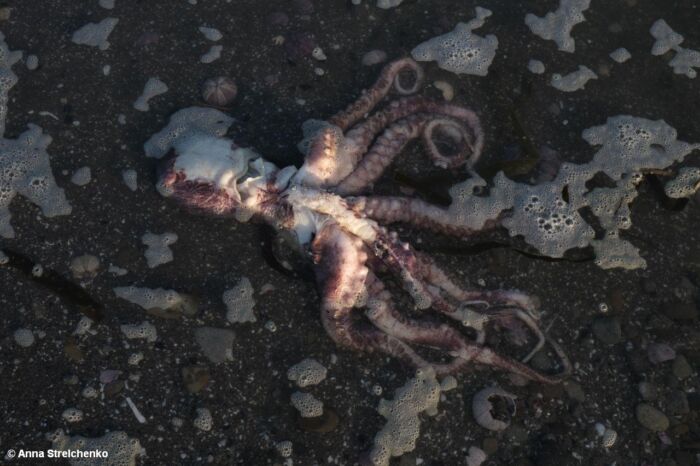
New environmental disaster in Russia, this time in the Pacific, particularly in the Gulf of Avacha, in the south-east of the Kamchatka Peninsula. It is particularly feared for Khalaktyrskij beach, a 30-kilometer strip of black volcanic sand located not far from the capital of the Petropavlovsk-Kamchatsky region, an area of rare naturalistic beauty with the peaks of volcanoes towering over the horizon, a UNESCO heritage site the Nalychevo park, not far away.
This disaster comes after the one in Norilsk on 29 May when about twenty tons of diesel leaked from the Nornickel company’s plants, threatening the Arctic.
The first to sound the alarm last week were surfers who for about a month suffer from eye problems due to eye burns, dry cough, nausea or high fever. At the same time, photos of numerous carcasses of marine animals, such as octopuses or sea urchins, brought ashore not only on the Kamchatka coast, but also on the northern Kuril Islands, which are part of the Sakhalin region, appeared on the net.
Greenpeace Russia has spoken of an ecological catastrophe on the Kamchatka Peninsula and the governor of the region Vladimir Solodov has ordered water analyzes. The samples showed a concentration of petroleum derivatives four times higher than normal and phenols two and a half times higher. Based on these data, the Minister for the Regional Environment Aleksej Kumarkov hypothesized that the cause of the pollution may have been a spill of these substances from a passing ship.
This hypothesis was denied by the ecologist Dmitry Lisitsin of Yuzhno-Sakhalinsk, head of the organization “Ekologicheskaya vakhta of Sakhalin” (“The ecological guard of Sakhalin”), who told ilfatto.it:
“There is nothing that points to oil pollution as the cause of these events. Oil is lighter than water and forms a film on its surface, has a characteristic odor and causes the death above all of birds and not of fish or bottom organisms, as in this case “.
Petroleum derivatives do not have levels of toxicity such as to mass poison animals, adds the ecologist who believes instead that “a very strong poison that kills living organisms” must have penetrated the water. According to the ecologist, these could be some components of the highly toxic rocket fuel that could have reached the ocean from the nearby Radygino military range where they are stored, because they have been in disuse since 1998.
Another version cited by the local site kam24.ru speaks of a possible leak from the pesticide burial site, Kozelskij polygon. Both versions are being examined by local authorities who will examine the two polygons in question on 6 October, Kamchatka Governor Vladimir Solodov announced.
As in the case of Nornickel, the local authorities have unleashed the wrath of Moscow for handling the situation. Deputy Speaker of the Duma Irina Yarovaya (United Russia) criticized the work of local authorities and brought 143 kilos of material to the capital to be examined in Moscow laboratories. According to the preliminary results of these analyzes, it is unlikely that it is industrial pollution, Russian Minister for Natural Resources and Ecology Dmitry Kobylkin said on 5 October. The second version assumes pollution caused by natural factors (algae), the minister added.
Vice-premier Yuri Trutnev, the envoy of Russian President Vladimir Putin to the Far Eastern District, said the causes of the pollution were not yet clear and reiterated that he wants to know what happened by the end of the week.
Meanwhile, Greenpeace conducted an expedition in Kamchatka waters on 4 October examining some bays south of Petropavlovsk-Kamchatsky and finding traces of pollution in the form of “spots of unknown origin”, one of which is moving towards the Unesco site ” The volcanoes of Kamchatka ”.